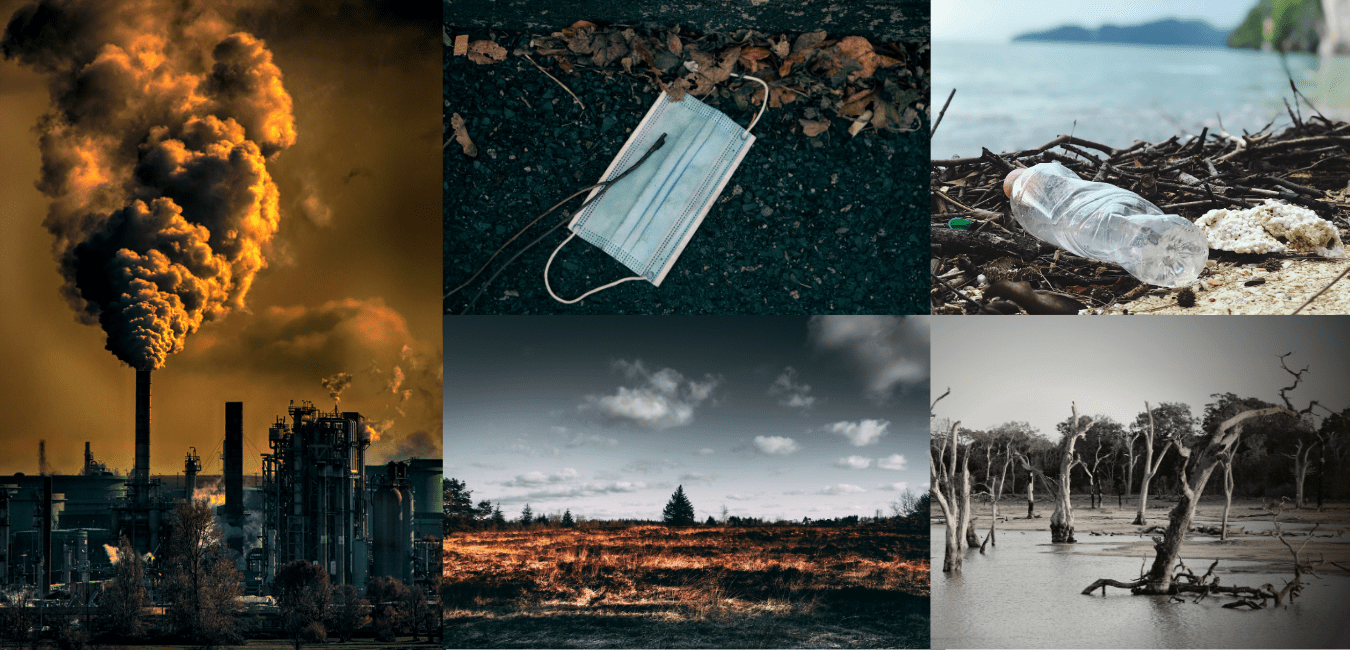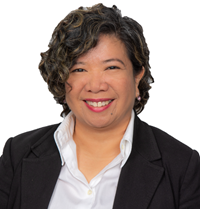NHRG #2: High School Division on Environmental Issues (Part 2)
OVERVIEW:
In commemoration of March 16, Kosen-rufu Day, the Young Successors Group (Student Division, High School Division, and Boys & Girls Division) challenged themselves as they launch the “New Human Revolution Generation” (NHRG), where they tackle pressing issues that we are facing today in the effort to realize peace and happiness.
The NHRG provides a platform for the youth where they can freely share their ideas, give new and different perspectives, offer innovative solutions, and empower others to take action and overcome powerlessness.

NHRG: Environmental Issues (Part 1):
Part 1 of NHRG's 2nd installment is published in the April 2021 Issue of Pag-Asa which features the thoughts and sentiments of High School Division members on the environmental issues that we are facing now, an interview with Ms. Takako Morita, who specializes in legal matters related to land use, renewable energy, climate finance, green economy, and development, and lastly, short guidance from Ikeda Sensei.
NHRG: Environmental Issues (Part 2):
IN A PROFESSIONAL PERSPECTIVE:
In continuation of that installment, we have conducted another interview with a professional, this time with Ms. Jasmin Callosa-Tarr. She is a highly skilled and versatile GIS specialist with more than 25 years of experience in the geospatial industry. She had used GIS and other related tools in assessing infrastructure resilience to natural disasters. She is adept with a variety of GIS applications to transport planning and modelling, digital engineering and (BIM), social sciences, urban and rural planning projects, demographic analysis and environmental management, crop yield analysis, participatory GIS and biodiversity conservation. Aside from gaining extensive experience in New Zealand, she had also worked in South Africa, Lesotho, Eswatini, Mozambique, South East Asia and The United Kingdom. Ms. Jasmin was also a member of the Geospatial Standards Advisory Group for the New Zealand Geospatial Office in 2009.
She is currently the Spatial Stream Chair for Survey and Spatial NZ; Secretary for the GIS for Conservation; and Committee Member for NZ Esri Users Group. Her publications include Participatory 3-Dimensional Modelling: Guiding Principles and Applications.

What do you think are the current environmental issues the country faces and its impact to our society? Overall, our fundamental environmental and human issue is Climate Change. Climate change is the long-term change in our local, regional and global average weather patterns. This climate change is not just about the change caused by time but most significantly by the collective and accumulation of people’s activities. These activities that were induced by human behavior and thinking are namely: generation of waste; air quality from pollution brought about by urbanisation which include loss of vegetation, vehicles, increase in population; food production are just some to mention. So, there is not one cause but a combination and the volume of these.
We now have so many unexplained and disturbed weather patterns such as typhoons during dry months, flooding where it used to be 1 in 1000-year events but is happening monthly. Some countries experience snow in summer and some too many forest fires during summer months. We think that “Oh it’s happening there, not here. I can do whatever I want.” This is not correct in Buddhist terms as, whatever we do there is corresponding effect and sometimes the effect that we see can also affect societies that we don’t know.
Can you share with us any concrete action/program your organization undertook in regards with these environmental issues? It has been a long time since I have worked with an environmental NGO in the Philippines, however the principles and behaviours that I have learned during that time is most precious and still applicable to this time. One example that we did is to establish a zero-waste program within our organisation. We have agreed that we do not bring in waste into the office, everything should be recyclable and reusable. So, if we ever do take-aways we bring our own containers and as much as possible we don’t try to eat at fast-food chain stores, so we don’t generate additional waste. For everything that we use in the office, we try to think how we can reuse it again for another purpose. When we go shopping, we bring our own bags to save on packaging.
Forest: Other activities that we have embarked on was going to the communities where the forests are. We engaged with the people taking care of the forest and let them understand their value that they contribute if they could enable the forest to grow rather than to slash and burn which is only a short-term benefit. It took time, but we did our best establishing good relationships with them by joining local activities, providing resource materials in the form of comics and home visiting. We have also participated in Total Log Ban rallies and marches to Malacanang to put some pressure to the government on some wrong decisions made by the government. We have also established management plans (how the community will manage the different zones) for the critical biodiversity sites that we have identified during those times.
Environmental Awareness: We also established relationships with schools and universities on how they can enable each student to become more aware of their environment and how to take action. We have done exhibits, movie premiers, newsletters, field trips etc, to gain interest and enable them to be aware of the environment.
These were just some examples of the activities that we did to enable a change in our environment.
What are the challenges or hindrances that you faced in addressing these issues? At that time, because people don’t seem to understand or see the effect of our actions to climate change, it was quite hard to engage and educate people on their role in ensuring that their environment is clean and that their actions will have a long-term effect to climate change. People on both sides of the economic spectrum contribute to this issue. For example, the rich might throw stuff sometimes after one use at worst for not using them at all, which creates multitude of unnecessary waste. On the other side of the coin, poorer economies might be using products that uses more packaging the long run such as sachets, use of non-recyclable materials on short-term basis.
However, once people can see that they can contribute to a change they contribute to changes in other people’s minds too. This is very inspiring to see.
Any message to our Filipino youth? I am not sure how much our society has changed in the last 10-15 years ago, but I can imagine that this has not changed that much. But for the youth of the SGI Philippines to think about these issues is quite impressive and something to be proud of as an organisation. In Buddhism we believe that the internal change should come from the individual and I think this is everybody’s cause to take until we become old. As that internal change can be a source of action to influence a change in our environment.
Our youth and the next generation of youths will be the most affected by the impact of past generations’ actions and relationships to their environment. It is most important that as youth face the collective issue of climate change more and more in the next decades, we also find creative ways of instilling the value of caring for our environment to anyone that we can encounter and have a chance to talk to. The voice of the youth is so powerful, that it can be heard by anyone, we just need to be patient.
BUDDHIST POINT OF VIEW / IKEDA SENSEI'S GUIDANCE:
Essentially, our personal security is not something that can be established in isolation. For each of us to enjoy a life that is safe and secure, it is crucial that both the natural environment and the society in which we live are flourishing in peace and stability.
Therefore, if we truly seek personal security, we must first transcend our lesser selves that are ruled by egoism and work to establish the peace and security of the society in which we live—in other words, “tranquility throughout the four quarters of the land.” This is the Daishonin’s message.
(Living Buddhism)
Living beings and their environments are not separate. They are one and indivisible. This is the source of the principle that the transformation of the individual leads to the transformation of the land and society.
(Living Buddhism)
As science advances, it is only natural that we should become involved in many different endeavours to preserve the environment. Each of us, as individuals, must make an effort—not to be selfish, and to save energy, for example. We must work to take better care of our environment. Any apparent material improvements in our life are no more than an illusion unless we enhance the fundamental quality of our life.
(Discussions on Youth, Dialogue with Nature)
People cannot exist divorced from nature, and the destruction of nature is nothing but a sign of the arrogance and ignorance of humanity.
(Discussions on Youth, Dialogue with Nature)
We Have a Duty to Preserve Nature
Government must be dedicated to the good of the people. It is a tragedy that the beautiful natural environment people have cherished and protected for generations is being destroyed in the name of economic growth, political advantage, and scientific progress. Because human beings have the capacity to be aware of the balance of nature, it is our duty to work to preserve it.
(Victorious Teen, How to Protect the Environment)
The desertification of our planet is linked to the desertification of the human spirit.
(Victorious Teen, How to Protect the Environment)
THE MAPTING APP
The Mapting (“mapping” and “acting”) app allows users to track and map activities that contribute to actualizing the Sustainable Development Goals (SDGs). It was developed jointly by the SGI (Soka Gakkai International) and Earth Charter International (ECI) as a way of engaging and educating youth in the challenge of making the 17 SDGs a reality and helping to highlight the positive actions being taken everywhere to address global problems.
Users are able to find out about each of the SDGs as well as take photos or videos of any act, project or idea that will help achieve the SDGs and share them on a world map. They can also see other activities going on in their area and learn about the values and principles of the Earth Charter.
While the concept of the app was born in Costa Rica, the process that led to it started nearly 15 years ago with the coproduction of two worldwide exhibitions, "Seeds of Change" in 2002 and "Seeds of Hope" in 2010, highlighting ordinary individuals who took action to initiate change.
Visit the mapting.org to download the app.
(Sources: sokaglobal.org, sustainabledevelopment.un.org, Earth Charter International)
